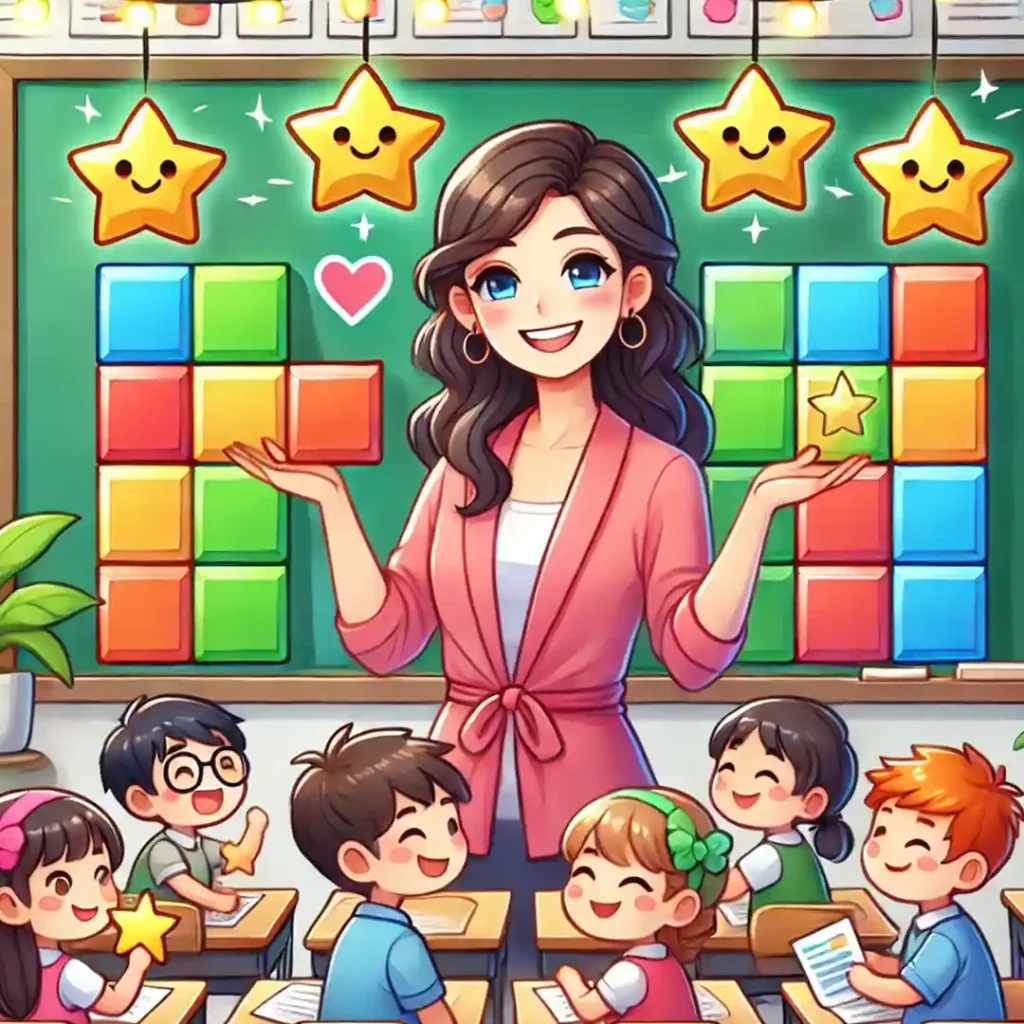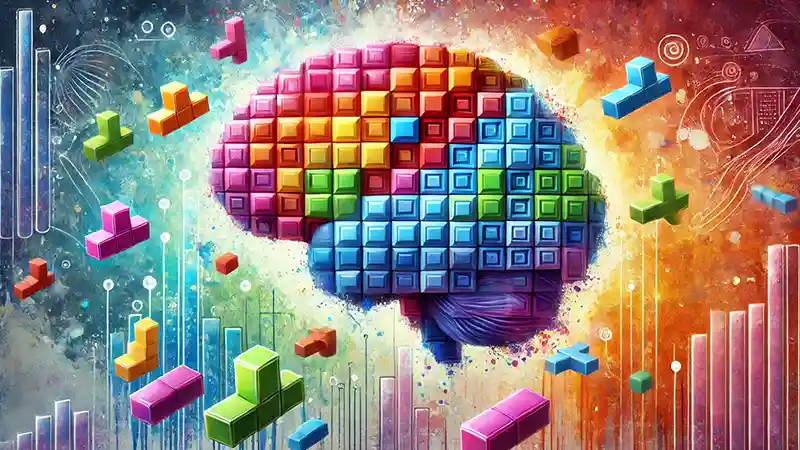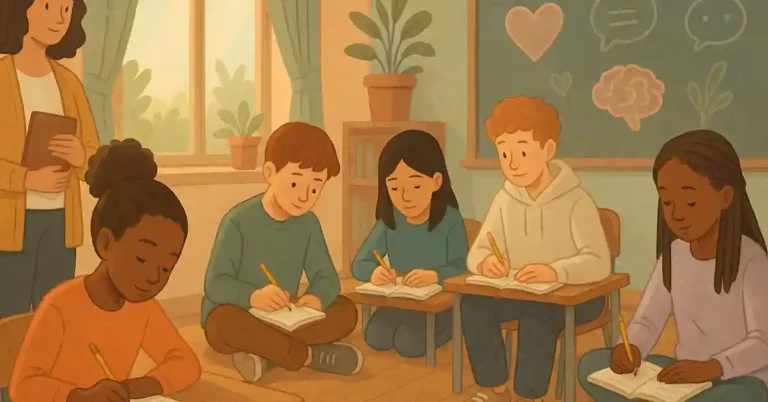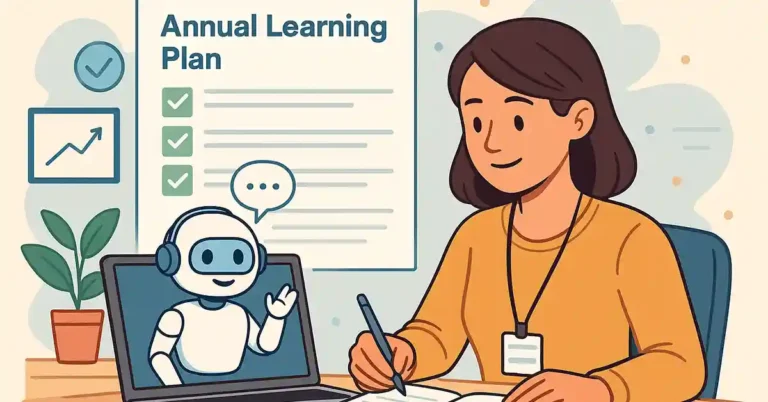Use the Tetris Effect to Become a Happier Teacher
Remember Tetris? Of course you do! Who could forget that classic game where you rotate and fit shapes together to clear lines? If you played it enough, you might have found yourself seeing those shapes everywhere—even when you weren’t playing. I know I did. I’d catch myself daydreaming about how the boxes on a grocery store shelf would fit together perfectly, or I’d glance at a brick wall and instinctively imagine how the bricks could shift into place to fill in gaps. And it wasn’t just me—people who played Tetris for hours on end reported seeing those familiar shapes in their dreams, and even in their waking life, they’d try to mentally organize the world around them into those neat little lines. But what does this have to do with becoming a happier teacher?
This phenomenon is so common that it’s been given a name: the Tetris Effect. It’s more than just a quirky aftereffect of playing a game too much—it’s a fascinating example of how our brains can get stuck in certain patterns of thinking. The more you focus on something, the more it starts to influence how you see the world, often without you even realizing it.
Defining the Tetris Effect:
The Tetris Effect is what psychologists refer to as a “cognitive afterimage.” It’s like when you stare at a bright light and then see spots in your vision even after you look away. In the case of Tetris, it’s not just about seeing shapes everywhere—it’s about how prolonged focus on a task can alter your perception of reality. When your brain is constantly engaged in a particular activity, it starts to carry that focus over into other areas of your life, sometimes in ways that can be surprisingly powerful.
Psychologists have studied this effect and found that our brains can get so accustomed to certain patterns that they continue to influence how we think and perceive the world long after we’ve stopped focusing on the original task. This can be both a blessing and a curse, depending on what those patterns are. In fact, it will have a large impact on whether or not you become a happier teacher.
Harmful Patterns that Prevent From Being Happier Teachers

Identifying Negative Patterns:
While the Tetris Effect can be a fun quirk when it comes to fitting shapes together, it can also manifest in ways that aren’t so positive. Think about that colleague who always seems to zero in on what’s wrong, whether it’s the students, the curriculum, or the administration. Or the principal who seems to focus only on errors, never acknowledging improvements. These individuals have developed their own version of the Tetris Effect—a negative one—where they’re stuck in a loop of seeing only problems and flaws.
This isn’t just an issue for the people who are stuck in these negative patterns—it affects everyone around them. Imagine two people experiencing the same day. One says, “It’s such a beautiful sunny day out here.” The other replies, “Yeah, but I wish it wasn’t so hot.” Both statements might be true, but they reflect very different mindsets. The first person is focusing on what’s good, while the second is stuck on what they perceive as negative. As a result, they each experience the day very differently, even though the circumstances are the same.
Consequences of a Negative Mindset:
When we get stuck in a negative Tetris Effect, it doesn’t just affect our mood—it can have a significant impact on our overall well-being and effectiveness. Focusing on the negative impedes our creativity because it narrows our perspective. We start to see fewer possibilities and opportunities, which can elevate our stress levels. This, in turn, lowers our motivation and makes us less open to new ideas and approaches.
The Negative Tetris Effect creates a cognitive pattern that can drag us down, decreasing our overall success and happiness. It’s like getting stuck in a level of Tetris where no matter how hard you try, the pieces just won’t fit together. But here’s the good news: just as our brains can get stuck in negative patterns, we can also retrain them to see the positive.
The Power of Attention:
As the philosopher and psychologist William James famously said, “My experience is what I agree to attend to.” This quote perfectly captures the essence of the Tetris Effect. Our brains are constantly bombarded with information—so much so that scientists estimate we filter out about 99% of what we perceive. If we didn’t, we’d be overwhelmed by the minutiae of daily life.
The trick is that we have some control over what we choose to focus on, even though it might not always feel that way. If you find yourself filtering for the bad—only noticing the problems, the mistakes, the things that went wrong—you’re likely to get stuck in that negative Tetris Effect. But with conscious effort, you can start to change those filters. By deliberately choosing to focus on the good, you can begin to shift your perspective, retraining your brain to see the positives and opportunities in your day-to-day life
The Positive Tetris Effect: Becoming a Happier Teacher

Leveraging Positive Patterns:
Just as our brains can get stuck in negative patterns, they can also be retrained to focus on the positive—this is what’s known as the Positive Tetris Effect. By deliberately shifting our focus to the good things in life, we can unlock three incredibly powerful tools: happiness, gratitude, and optimism. These tools have a real, measurable impact on our performance, well-being, and achieving outcomes in becoming happier teachers.
When we train our brains to see the positive, we’re essentially giving ourselves a boost in everything we do. Positivity has been shown to lead to better performance in the classroom, greater overall well-being, and a more fulfilling teaching experience. It’s like putting on a pair of glasses that allows you to see all the possibilities and opportunities that were there all along—you just weren’t noticing them before.
Gratitude:
One of the most effective ways to cultivate a Positive Tetris Effect is through the practice of gratitude. Research by psychologist Robert Emmons has shown that gratitude is a fundamental component of well-being. People who regularly practice gratitude are not only happier but also more energetic, emotionally intelligent, and less likely to suffer from depression or anxiety. Gratitude has the incredible ability to shift our focus away from what we lack and towards what we already have, which in turn makes us feel more fulfilled and content.
In a teaching context, practicing gratitude could mean taking a moment each day to reflect on the small victories in the classroom—a student’s breakthrough, a lesson that went well, or even just the support of a colleague. By consistently acknowledging and appreciating these moments, we train our brains to focus on the positive, which helps to build a happier, more resilient mindset.
Optimism:
As you continue to focus on the positive, something interesting happens—optimism starts to take root. Optimism is the natural consequence of sustained positivity. The longer you train your brain to see the good, the more you start to believe that this trend will continue. And that’s a powerful belief to hold.
Optimism is a key predictor of work performance, particularly in teaching, where resilience and adaptability are essential. Optimists tend to set more ambitious goals, persevere through challenges, and cope better with stressful situations. This is because they believe that good things are not only possible but likely. By fostering optimism, you’re not just improving your mindset—you’re setting yourself up for greater success in your teaching career.
Examples of Positive Tetris Effect in Action:
Let me share a fascinating example of how the Positive Tetris Effect works in action. Richard Wiseman, a psychologist, conducted a quirky experiment where he asked volunteers to read through a newspaper and count how many photos were in it. The twist? On page two, there was a large message that read: “Stop counting, there are forty-three photos in this newspaper.” The results were telling—people who considered themselves “lucky” spotted the message right away, while those who thought of themselves as “unlucky” took much longer, sometimes missing the message entirely.
This experiment highlights the concept of “predictive encoding,” where expecting positive outcomes makes it easier to recognize and seize them. When you prime yourself to look for opportunities and positivity, your brain is more likely to find them. In the classroom, this could mean spotting a student’s potential, recognizing a teachable moment, or identifying a creative solution to a problem—things you might have missed if you were stuck in a negative mindset.
By embracing the Positive Tetris Effect, you’re not just becoming a happier teacher—you’re also setting yourself up for success by training your brain to focus on the opportunities and positives that can enhance your teaching experience and your students’ outcomes.
Training Your Brain to be a Happier Teacher

Shifting your mindset isn’t something that happens overnight. Just like mastering Tetris (you know, that sweet feeling when you finally start clearing those lines effortlessly), retraining your brain to focus on the positive takes a bit of practice. But trust me, it’s worth the effort. When you start seeing the world through a more positive lens, not only do you feel better, but you also open yourself up to more opportunities and success in your teaching life.
Here’s a step-by-step guide to help you get started:
Start Your Day with Gratitude:
The first thing I do when I wake up is think of three things I’m grateful for. It could be as simple as a good night’s sleep, a hot cup of coffee, or even the fact that it’s Friday. Starting your day with gratitude sets a positive tone and primes your brain to look for the good throughout the day. Try writing these down in a journal or even just saying them to yourself as you get ready in the morning. The key is consistency—doing this daily will gradually shift your focus to the positive.
Reframe Your Challenges:
Teaching isn’t always sunshine and rainbows—there are tough days and tough situations. But here’s the trick: instead of seeing these challenges as roadblocks, try reframing them as opportunities for growth. For example, if you’re struggling with a difficult student, rather than getting frustrated, think about how this challenge is helping you become a more patient and creative teacher. It’s all about perspective. When you start looking at challenges as stepping stones rather than stumbling blocks, you’ll notice a shift in how you approach your work.
Practice Random Acts of Kindness:
This one is fun and easy to do. Each day, make it a point to do something kind for someone else—whether it’s complimenting a colleague, helping a student with something they’re struggling with, or even just holding the door open for someone. These small acts of kindness not only brighten someone else’s day but also reinforce your own positive mindset. Plus, kindness is contagious—when you start spreading positivity, it has a way of coming back to you.
End Your Day on a Positive Note:
Just like starting your day with gratitude, it’s equally important to end it on a positive note. Before you go to bed, take a few minutes to reflect on your day. Grab a notebook or open a notes app on your phone, and write down a few things that happened during the day that made you feel good. It doesn’t have to be anything huge—it could be as simple as a student’s smile, a compliment from a colleague, or even just the fact that you managed to stay patient during a tough moment.
The act of writing these things down is powerful. Not only does it allow you to reflect on the good moments, but it also helps you to essentially re-live those happy experiences. By consciously focusing on these positive moments, no matter how small, you’re training your brain to notice and appreciate the good things in your day. Over time, this practice will help shift your mindset, making it easier to see positivity in even the most challenging days.
Commit to the Process:
Here’s the thing—this isn’t a one-time deal. Just like you didn’t become a Tetris master in one go, developing a Positive Tetris Effect requires commitment. Give yourself a few days—maybe even a week—of consistent practice with these steps. You’ll likely notice a shift in how you view your day-to-day experiences. The more you train your brain to focus on the positive, the more natural it will become, and before you know it, you’ll find yourself noticing opportunities and possibilities that you might have missed before.
So, are you ready to give it a try? Remember, this is all about progress, not perfection. Start small, stay consistent, and watch how your mindset—and your teaching experience—begins to transform.
For more about teacher happiness, check out this page.
Conclusion
As we’ve explored, the Tetris Effect isn’t just about seeing shapes in your dreams after a marathon gaming session—it’s a powerful metaphor for how our brains can get stuck in patterns, for better or worse. Shifting from a Negative to a Positive Tetris Effect can truly transform your experience as a teacher. When you train your brain to focus on the positives—whether it’s through practicing gratitude, fostering optimism, or simply paying more attention to the good—you set the stage for greater happiness, enhanced teaching effectiveness, and a deeper sense of satisfaction in your work.
By making this mindset shift, you’ll find that not only does your day-to-day experience improve, but so does your creativity and ability to connect with your students. You’ll start to see more opportunities, feel more energized, and enjoy your role as an educator on a whole new level.
Bibliography
Achor, S. (2010). The Happiness Advantage: How a Positive Brain Fuels Success in Work and Life. Crown Business.





